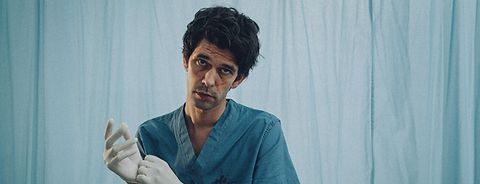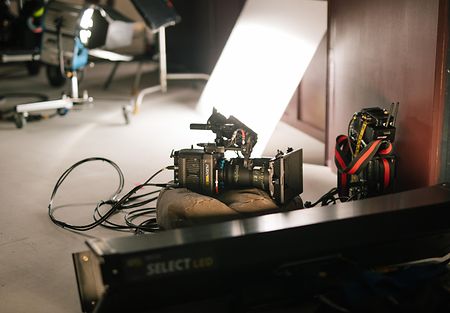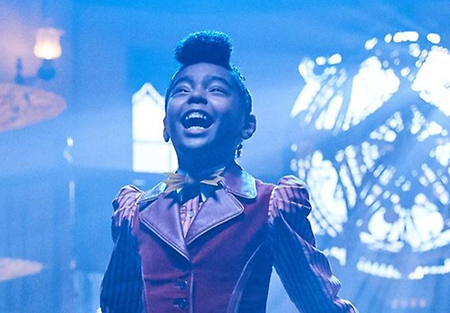Based on the best-selling memoir by Adam Kay, “This Is Going to Hurt” follows a junior doctor played by Ben Whishaw as he navigates chaotic 97-hour working weeks at a London hospital to the detriment of his own wellbeing, friendships, and relationships. For this unflinching portrayal of life on the front line of Britain’s National Health Service (NHS), director Lucy Forbes and DP Benedict Spence, who worked together on the first four episodes, sought a visual approach grounded in realism. Combining an ALEXA Mini LF camera with Zeiss Supreme Primes, Spence shot mainly handheld and devised an innovative lighting scheme that helped him work fast and maintain contrast in the frame. He spoke to ARRI about his experiences on the show, which was produced by Sister Pictures in association with Terrible Productions, and broadcast in the UK by the BBC and in the United States by AMC.
How did you and the director come together on this project?
I've worked with Lucy for almost 15 years. We started out doing scripted comedy, short films, and commercials together. Her drama career really kicked off with the pilot for a show called “In My Skin,” which we shot in 2018. Off the back of that, she and I got the second series of “The End of the F***ing World” for Netflix. Then came the series of “In My Skin,” and that got us “This Is Going to Hurt.” We first spoke about it in January 2020, just before the pandemic hit. My wife had read the book and didn’t stop talking about it, so I read it and said to Lucy, “This is absolutely brilliant, sign me up.”
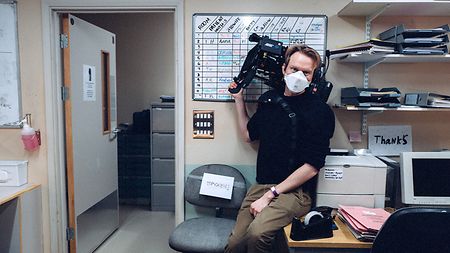
Cinematographer Benedict Spence on the hospital set with the ALEXA Mini LF
What were your initial thoughts about how you were going to shoot it?
It all came from the script really. If you read the first episode, it’s a non-stop 24-hour period in the life of a junior NHS doctor; it goes and it goes and it doesn't stop. There's an immediacy to the script that we really wanted to capture. We both felt it was important to have something that felt real, or at least real-ish. Not a documentary style, because you’d never shoot a true documentary the way we shot the show, but a natural feel. Controlled naturalism is what I kept calling it—creating a fully believable world and placing the audience right there with the cast in an immediate way.
And why choose large format with the ALEXA Mini LF?
I felt like the Mini LF was the no-compromise camera for the show. The larger format has everything that the ALEXA sensor gives me, but doubled. The shallower depth of field is always useful; being able to pick characters out from their backgrounds whenever you want is an incredible tool. I had shot “The End of the F***ing World” with the full-sized ALEXA LF and the series of “In My Skin” with the Mini LF, so I knew it inside out. I'd always rated the sensor at 2000 ISO, which gives you another stop in the highlights, so I loved it for that. And the compact size, for what we wanted to be an incredibly handheld show, felt like absolutely the way to go.

Director Lucy Forbes (center) discussing a scene with actors Ben Whishaw (left) and Rory Fleck Byrne
Did it turn out to be as handheld as you envisioned?
Yes, it had to be handheld. We briefly considered Steadicam, but it’s got such inertia that it can't stop and it’s a big old bit of kit. We wanted the nimbleness of a handheld camera because we were following Ben Whishaw throughout every single scene, almost like the camera is his best friend. There was quite a specific set of coverage rules. Our master of a scene would be on a fairly wide lens, usually a 40 mm, in front of Ben as he goes down corridors, in and out of doorways, into lifts, up and down stairs, around hospital beds. We would normally shoot that first because it would dictate eye lines. Almost all the other eye lines would be over Ben's shoulder, so they'd be on a slightly longer lens like a 50 mm or 65 mm, and they'd have a little edge of Ben's shoulder. Aside from one or two shots of phone calls, Ben is in every single shot of episode one.
Did you shoot in real hospitals at all?
About 70 percent of the show is hospital-based, and the majority of that was shot in the hospital set that was built for us on two floors of a building in East London. It was a 360-degree set and it felt like a living, breathing hospital. Shooting even very limited scenes at real hospitals was a significant challenge; exteriors and ins-and-outs were mainly at Ealing Hospital, but this was in early 2021, during the second major lockdown in the UK, so we were lucky to be there at all.

Benedict Spence getting ready to shoot over the shoulder of Ben Whishaw
How did you light the hospital set?
On every job I do I have a sort of fever dream, something that goes over and over in my head, and on this one it was the fluorescent hospital lights. We scouted out a few real hospitals and the lighting in patient-facing areas is really bright and very flat. We wanted the show to feel real, so pushing the contrast on people's faces to make it moodier and more interesting was problematic. Every step I took towards that would be a step away from what a real hospital looks like. That was a constant source of juggling for me.
I figured near the start that if I couldn't do it with lighting contrast, I'd try to do it with color contrast, which meant finding ways to mix tungsten and daylight color temperatures in shots whenever I could. I had about 300 Titan Tubes built into the hospital set and these were all cabled to a big lighting desk. I had a walkie-talkie to the desk operator the entire time, so I could very easily shift the color temperature or darken areas above the cast to add a bit more contrast. It was by far the biggest lighting spend of the series and I had to fight for it, but it was such a powerful tool. For example, when we had to trick dusk, I would warm up all the overhead lights to something like 2,000 Kelvin and change the camera's white balance to match that. All the windows went deep blue, yet the lights still felt neutral.
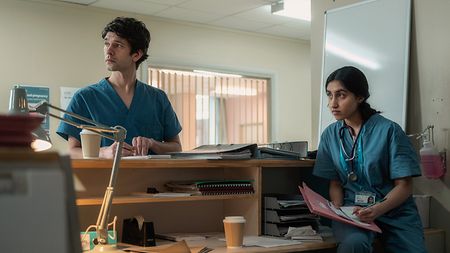
An example of different color temperatures being visible in the same frame
Was it tricky to protect the various different skin tones when you were mixing color temperatures?
Well, it's an ALEXA. You don't have to think about it. You don't have to worry about clipping or color temperatures like you do with other cameras, and that's why I refuse to shoot on anything else. For me it's all about skin tones and highlights, and the ALEXA does it best. The only time I had to be a little bit careful of clipping was a scene in a strip club when we had a UV wash and we had to keep a tiny eye on that, but it was nothing compared to what we'd have had to do with a different camera. In terms of skin tones and highlights, there is just no worry.
Looking back at the show, what are you most proud of?
Two things. Firstly, I really like our first episode. I think we managed to capture the pace of the non-stop day and the changing of the hours. The script didn't miss a beat and I don't think we did either, so I’m proud of that. And secondly, we were telling the story of a doctor in the middle of a pandemic, so it felt like an important story to tell. If we started any kind of conversation about the NHS and our doctors, then it was well worth all the early starts.
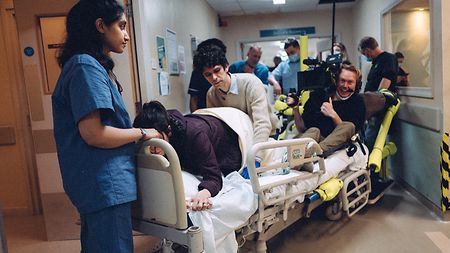
Using a hospital gurney as a dolly: Benedict Spence handholds the camera for a tracking shot
Opening image: Ludovic Robert
